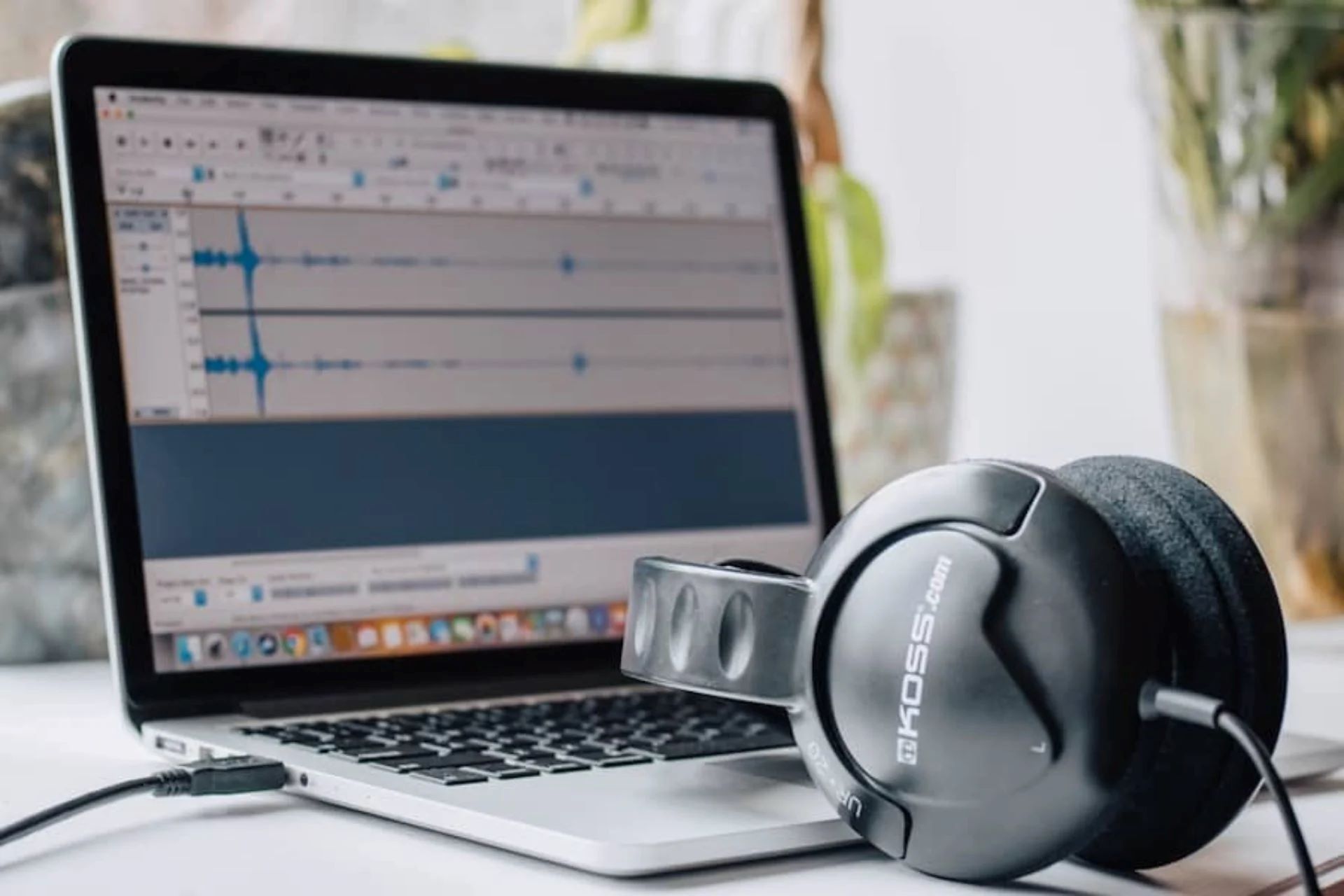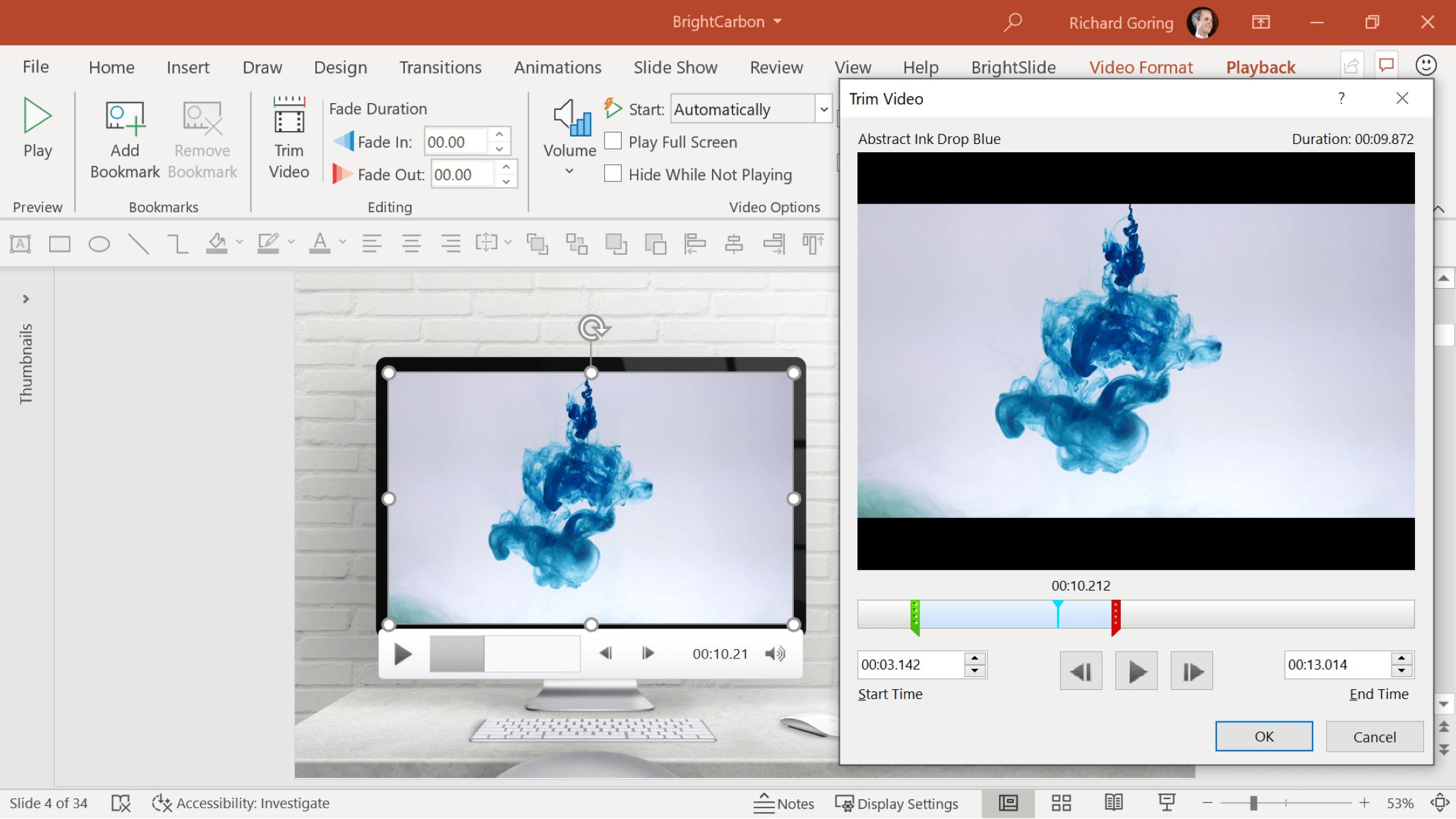Home>Production & Technology>Background Music>How To Choose Background Music For Videos


Background Music
How To Choose Background Music For Videos
Modified: January 22, 2024
Looking for the perfect background music for your videos? Learn how to choose the right background music to enhance your video content and engage your audience.
(Many of the links in this article redirect to a specific reviewed product. Your purchase of these products through affiliate links helps to generate commission for AudioLover.com, at no extra cost. Learn more)
Table of Contents
- Introduction
- Understanding the Importance of Background Music
- Identifying the Purpose and Tone of Your Video
- Considering the Target Audience
- Avoiding Copyright Issues
- Selecting the Right Genre of Music
- Matching the Music Tempo and Energy to the Video
- Balancing the Music with Dialogue and Sound Effects
- Testing and Adjusting the Volume Levels
- Choosing Instrumental or Vocals
- Evaluating the Overall Flow and Compatibility
- Utilizing Online Resources for Royalty-Free Music
- Conclusion
Introduction
When it comes to creating videos, whether it’s for marketing purposes, entertainment, or educational content, the importance of background music cannot be underestimated. Background music has the power to enhance the overall impact and emotional connection of a video, making it more engaging and memorable for the viewer.
Choosing the right background music for your videos can be a challenging task. With an abundance of options available, it’s important to consider various factors to ensure that the music complements the tone, style, and purpose of your video.
In this article, we will explore the process of selecting the perfect background music for your videos. We will provide you with valuable insights and tips to help you make informed decisions and create videos that resonate with your audience. From understanding the importance of background music to considering the target audience and avoiding copyright issues, we’ve got you covered.
So let’s dive in and discover how you can choose the most suitable background music to take your videos to the next level.
Understanding the Importance of Background Music
Background music plays a crucial role in videos by setting the mood, evoking emotions, and enhancing the overall viewer experience. It adds depth and dimension to the visuals, making the video more engaging and memorable.
One of the primary functions of background music is to create an emotional connection with the audience. The right music can evoke various emotions such as excitement, happiness, romance, or suspense, depending on the desired effect of the video. By eliciting the appropriate emotional response, background music can help captivate viewers and keep them engaged throughout the video.
In addition to setting the mood, background music also helps to reinforce the message or theme of the video. Whether it’s a dramatic scene in a film or a promotional video for a product, the music can be used to emphasize the intended message and enhance the impact of the visuals and narration.
Furthermore, background music can provide a sense of continuity and cohesiveness to the video. It acts as a thread that binds different segments together, creating a seamless flow. This is particularly important in longer videos or those with multiple scenes, as the music helps to maintain the viewer’s interest and prevent them from losing focus.
Another important aspect to consider is the branding and identity of your videos. Background music can become a defining element that helps to establish a recognizable style and personality for your brand. By consistently using music that aligns with your brand values, you can create a cohesive and memorable experience for your audience.
Overall, background music is an essential tool in video creation. It not only enhances the visual elements but also helps to trigger emotions, reinforce messages, maintain interest, and establish brand identity. By understanding the importance of background music, you can make well-informed decisions in selecting the right music to make your videos more impactful and effective.
Identifying the Purpose and Tone of Your Video
Before diving into the process of selecting background music for your video, it’s crucial to identify the purpose and tone of your video. Understanding these aspects will guide you in choosing music that aligns with your objectives and creates the desired atmosphere.
The purpose of your video may vary depending on its nature. Are you creating a promotional video to showcase a product or service? Is it an educational video aiming to provide information? Or perhaps it’s a creative video meant to entertain and engage viewers. Defining the purpose will help you narrow down the type of music that would best suit your video.
Next, consider the tone or mood you want to convey. Is your video lighthearted and fun, or is it more serious and dramatic? The tone will influence the choice of music genres, instruments, and tempo. For a lively and upbeat video, you might opt for energetic and catchy tunes. On the other hand, if you’re aiming for a more emotional or sentimental tone, you may lean towards softer and melodic compositions.
It’s important to ensure that the purpose and tone of your video are aligned with your target audience. Consider who your video is intended for and what would resonate with them. For example, if your video is targeted at a younger audience, you might want to choose contemporary or popular music genres that they can relate to. On the other hand, if your video is geared towards a more professional audience, you may lean towards more sophisticated and instrumental tracks.
Identifying the purpose and tone of your video provides a solid foundation for selecting the right background music. It helps you narrow down your options and ensures that the music enhances the overall message and impact of your video. By understanding your video’s purpose and tone, you can make informed decisions that resonate with your intended audience.
Considering the Target Audience
One crucial factor to consider when selecting background music for your videos is your target audience. The music you choose should resonate with your viewers, reflect their preferences, and enhance their overall viewing experience.
Start by analyzing your target audience demographics. Consider factors such as age, gender, location, and interests. Each demographic is likely to have different musical preferences. For example, younger audiences might gravitate towards contemporary and upbeat music, while older audiences might prefer classical or nostalgic tunes. Understanding these preferences will help you narrow down your options and choose music that will appeal to your specific target audience.
It’s also important to consider the cultural background of your target audience. Different cultures may have distinct musical tastes and traditions. Take the time to research and understand the cultural sensitivities of your viewers to avoid any potential misunderstandings or conflicts. If your video is targeting a global audience, opting for music with a universal appeal or using instrumental tracks can help make it more inclusive and relatable.
In addition to demographics and culture, consider the specific interests and preferences of your target audience. Are they fans of specific music genres or artists? Do they have any particular hobbies or lifestyles that can influence their musical tastes? Tailoring your background music to these interests can create a stronger connection with your audience and make your video more relatable.
Keep in mind that the goal is not to cater to everyone’s individual preferences, but rather to select music that resonates with the majority of your target audience. It’s important to strike a balance between appealing to your specific audience and staying true to the purpose and tone of your video.
By considering your target audience, you can make informed decisions about the type of music that will enhance their viewing experience. Understanding their demographics, cultural background, and interests will help you select background music that resonates with them on a deeper level, making your videos more impactful and engaging.
Avoiding Copyright Issues
When selecting background music for your videos, it’s crucial to avoid copyright infringement. Unauthorized use of copyrighted music can lead to legal consequences, including penalties and the removal of your video from online platforms. To ensure you stay on the right side of the law, consider the following tips to avoid copyright issues.
1. Use Royalty-Free Music: One of the safest options is to use royalty-free music. These are tracks that are either in the public domain or come with a license that allows you to use them legally in your videos. There are numerous websites and platforms where you can find a wide range of royalty-free music options available for purchase or free download.
2. Creative Commons Licensing: Some artists release their music under Creative Commons licenses, which specify the terms of use. Make sure to read and understand the specific Creative Commons license associated with the music you intend to use. Some licenses may require you to give credit to the artist, while others may have limitations on commercial use.
3. YouTube Audio Library: If you’re creating videos for YouTube, take advantage of the YouTube Audio Library. It offers a collection of free and royalty-free music tracks that you can use in your videos without worrying about copyright issues. You can search for music based on the genre, mood, instrument, or duration to find the perfect fit for your video.
4. Purchase Music Licenses: If you come across a specific copyrighted track that you want to use in your video, consider purchasing a license. This grants you the legal right to use the music within the terms of the license agreement. There are various licensing options available, including single-use licenses, multi-use licenses, and even sync licenses for commercial purposes.
5. Create Your Own Music: If you have the skills and resources, another option is to create your own original music. This ensures that you have full control over the rights to the music and eliminates the risk of copyright infringement. You can use various digital audio workstation software and virtual instruments to compose and produce your own background music.
Remember, it’s always better to be safe than sorry when it comes to copyright issues. Taking the time to research and choose legally usable music will not only protect you from legal troubles but also ensure that you maintain a positive reputation as a creator.
By following these guidelines, you can confidently select background music that is free from copyright issues, allowing you to focus on creating captivating videos without any legal concerns.
Selecting the Right Genre of Music
Choosing the right genre of music is a crucial step in selecting background music for your videos. The genre sets the tone, style, and overall mood of your video, influencing how viewers perceive and engage with the content. Consider the following factors to help you select the most suitable genre:
1. Video Theme and Content: The genre of your music should align with the theme and content of your video. For example, if you’re creating a travel vlog showcasing exotic locations, you might opt for world music or tropical vibes to create a sense of adventure and excitement. If you’re creating a corporate video, a more professional and subtle genre like ambient or corporate music may be appropriate.
2. Emotional Impact: Think about the emotional impact you want to achieve with your video. Different genres evoke different emotions. For instance, uplifting and energetic genres like pop or electronic music can create a sense of positivity and motivation. On the other hand, classical or instrumental genres can evoke a more elegant and sophisticated emotional response. Consider the desired emotional impact and choose a genre that complements it.
3. Target Audience Preferences: Understanding your target audience’s musical preferences can help narrow down the genre. Analyze the demographic and psychographic characteristics of your audience. If you’re targeting a younger audience, genres like pop, hip-hop, or EDM might appeal to them. For an older or more sophisticated audience, genres like jazz, classical, or folk might resonate better. Tailoring the genre to your audience’s preferences can create a stronger connection.
4. Branding and Identity: Consider your brand’s image and identity. The genre of music you select should align with your brand values and personality. For example, if your brand is youthful and energetic, you might want to explore genres like indie rock or modern pop. If your brand is more classical and refined, genres like classical or orchestral music might be a better fit. Consistency in the genre of music used across your videos can help establish a recognizable and cohesive brand identity.
5. Experimental and Unique Approaches: Don’t be afraid to think outside the box and experiment with different genre combinations. Sometimes, unexpected genre choices can add an interesting layer of creativity and uniqueness to your videos. Just ensure that the selected genre still complements the overall tone and purpose of your video.
Ultimately, the right genre of music will enhance the impact and effectiveness of your video. By considering the video theme, emotional impact, target audience preferences, branding, and even exploring unique genre combinations, you can select background music that perfectly complements your video and engages your viewers.
Matching the Music Tempo and Energy to the Video
Matching the tempo and energy of the background music to your video is essential in creating a cohesive and harmonious viewing experience. The tempo and energy of the music can significantly impact the mood, pacing, and overall feel of your video. Here’s how you can ensure the music aligns with your video:
1. Analyze the Visual Dynamics: Take into consideration the visual dynamics of your video. Identify the pace, rhythm, and movement of the visuals. For fast-paced videos with quick cuts and action sequences, you may want to choose music with a higher tempo and energetic beats. For slower, more contemplative shots, a slower tempo and more tranquil music may be suitable.
2. Enhance the Emotional Impact: Consider the emotions you want to evoke and the energy levels associated with them. Upbeat and lively music can create a sense of excitement and joy, while slower and softer music can evoke feelings of serenity and introspection. Match the tempo and energy of the music to the desired emotional impact to enhance the viewer’s experience.
3. Maintain Consistency: Ensure that the music maintains consistency throughout the video. Sudden shifts in tempo or energy can be jarring for the viewers and disrupt the flow of the video. If there are multiple scenes or transitions, make gradual changes in tempo and energy to maintain a seamless transition.
4. Sync with Action or Narrative: Consider syncing the music with specific actions or narrative elements in your video. For instance, if there is a climactic moment or an impactful visual, you can use music with higher energy or tempo to build anticipation and emphasize the significance of that moment.
5. Consider Genre Conventions: Different music genres have their own tempo and energy conventions. Ensure that the music follows these conventions to maintain coherence and authenticity. For example, dance music generally has a faster tempo and higher energy, while classical music tends to be more nuanced and dramatic.
Remember, the goal is to find a balance between the music and visuals, creating a complementary relationship. The tempo and energy of the music should enhance the emotions, pacing, and overall narrative of the video, creating a cohesive and engaging experience for the viewers.
By carefully matching the music tempo and energy to your video, you can elevate the impact and effectiveness of your content, creating a seamless and enjoyable viewing experience.
Balancing the Music with Dialogue and Sound Effects
When it comes to creating videos, it’s important to strike the right balance between background music, dialogue, and sound effects. Each of these elements plays a crucial role in enhancing the overall viewing experience. Here are some tips to help you achieve a harmonious balance:
1. Prioritize Clarity: The dialogue should always take precedence in terms of clarity. It’s important for viewers to be able to clearly hear and understand the spoken words. Ensure that the volume of the dialogue is given prominence over the music and sound effects. Adjust the levels accordingly, making sure the dialogue is clear and audible without being overpowered by the other elements.
2. Enhance Mood and Emotion: Background music is often used to enhance the mood and emotional impact of a video. Consider the emotional tone of the scene or the overall video and choose music that complements it. The music should enhance the desired emotions without overpowering the dialogue or becoming distracting.
3. Use Music as Transitions: Background music can be utilized as a transitional element between scenes or to create a seamless flow. During these transition moments, you can increase the volume of the music slightly to smoothly connect different parts of the video. However, be cautious not to make the transition jarring or interrupt the overall coherence of the video.
4. Sound Effects for Impact: Sound effects can play a crucial role in bringing a video to life. They can contribute to the realism, create a sense of immersion, and emphasize specific actions or events. Ensure that sound effects are balanced with the dialogue and music. The levels should be adjusted to maintain clarity while still providing the desired impact.
5. Test and Listen: It’s essential to regularly test and listen to your video’s audio mix throughout the editing process. Pay attention to the balance between the dialogue, music, and sound effects. If necessary, make adjustments to ensure that all elements are well-balanced and harmonious.
Remember, the goal is to create an audio mix where all elements work together to enhance the viewer’s experience. The music, dialogue, and sound effects should work in harmony, enhancing the mood, emotions, and impact of the video without overpowering one another.
By carefully balancing the music with dialogue and sound effects, you can create a well-rounded and immersive audio experience that captivates your audience and enhances the overall quality of your videos.
Testing and Adjusting the Volume Levels
Testing and adjusting the volume levels of your video’s audio is a critical step in ensuring a well-balanced and enjoyable viewing experience. Properly calibrated volume levels help to maintain clarity, prevent distortion, and create a more immersive audio environment for your audience. Here are some tips for testing and adjusting volume levels:
1. Play the Video on Different Devices: To ensure that your audio levels are suitable for various viewing platforms, test your video on different devices. This includes laptops, desktop computers, smartphones, tablets, and even smart TVs. Each device may have different audio output capabilities, and testing on multiple devices allows you to get a broader perspective on how the audio sounds.
2. Listen with Different Headphones and Speakers: Similarly, listen to your video using different headphones and speakers. Wired headphones, wireless earbuds, and external speakers can produce different sound qualities and accentuate certain frequencies. By listening on a variety of devices, you can ensure that your audio levels are balanced and pleasant across different listening setups.
3. Pay Attention to Dialogue and Voiceovers: The dialogue and voiceovers in your video should be the focal point. Ensure that they are clear and intelligible without being overly loud or soft. Adjust the volume levels so that the dialogue is audible and well-balanced with the background music and sound effects. Test different sections of the video where dialogue is present to ensure consistency in volume levels.
4. Consider Peak Levels and Dynamic Range: Keep an eye on the peak levels of your audio. Peaks should not exceed 0 dB to avoid distortion and clipping. Additionally, consider the dynamic range of your video’s audio. The dynamic range refers to the difference between the softest and loudest sounds. Aim for a balanced dynamic range to prevent audio elements from getting lost or overwhelming each other.
5. Utilize Audio Compressors and Limiters: Audio compressors and limiters can help you control the dynamic range and ensure a more consistent volume level throughout your video. These tools help to reduce sudden jumps in volume and prevent clipping. Experiment with different compression settings to find the optimal balance between maintaining the desired audio dynamics while keeping the volume levels under control.
6. Seek Feedback and Revisit Adjustments: After making initial adjustments, seek feedback from others to gather their perceptions of the audio levels. If needed, revisit and fine-tune your volume adjustments based on the feedback received. Remember, audio is subjective, and different individuals may have varying preferences, so gathering multiple perspectives can be helpful.
By thorough testing and adjusting of volume levels, you can ensure that your video’s audio is balanced, clear, and enjoyable for your audience. Take the time to carefully evaluate and fine-tune the volume levels to create a more immersive and professional audio experience.
Choosing Instrumental or Vocals
One important consideration when selecting background music for your videos is whether to choose instrumental tracks or music with vocals. Both options have their merits and can contribute to the overall impact of your video in different ways. Here are some factors to consider when making this decision:
1. Emotional Impact: Instrumental music has the advantage of allowing the viewers to focus on the visuals and the emotions they evoke. Without lyrics, instrumental tracks can create a more immersive and open-ended experience, allowing the audience to interpret and connect with the music in their own way. On the other hand, music with vocals can add an extra layer of emotional depth through the lyrics, as the words can directly convey specific meanings, stories, or messages.
2. Context and Narrative: Consider the context and narrative of your video. Are there specific messages or stories that need to be conveyed through the music? If so, lyrics can be a powerful tool in reinforcing and enhancing those elements. For example, if you are creating a promotional video or a storytelling piece, music with vocals can help convey the intended message and strengthen the narrative.
3. Vocal Genre and Language: If you opt for music with vocals, consider the genre and language of the vocals. Different genres and languages bring their unique qualities and cultural associations. For example, using folk music with vocals in a video with a rural or rustic theme can evoke a sense of authenticity and connection to nature. Consider the genre and language that aligns with your video’s theme, mood, and target audience.
4. Balance with Dialogue: If your video includes voice-overs, interviews, or dialogue, instrumental music may be a better choice to avoid clashing with the spoken words. Instrumental tracks provide a neutral and complementary sonic backdrop that can enhance the message and prevent audio conflicts between vocals in the music and those in the dialogue. This ensures that the voices of your video’s participants remain clear and prominent.
5. Personal Preferences and Branding: Ultimately, the decision between instrumental or vocal music can also come down to personal preferences and the branding or identity of your videos. Consider your own creative vision and the style that best aligns with your brand or personal aesthetic. If you have a preference for a specific sound or want your videos to have a distinctive voice, selecting music with vocals that reflects your vision can help in establishing a unique identity.
There is no right or wrong choice between instrumental or vocals for your background music. It depends on the specific requirements of your video, the emotions you want to evoke, and the overall desired impact. Assess the context, consider your target audience, and select the option that best enhances the visuals and engages your viewers.
Evaluating the Overall Flow and Compatibility
Once you have selected background music options for your video, it’s important to evaluate the overall flow and compatibility of the music with the visuals. This step ensures that the music seamlessly integrates with the video content and enhances the viewer’s experience. Here are some key aspects to consider during this evaluation:
1. Consistency with Video Theme and Tone: Review the video as a whole and assess whether the selected music aligns with the video’s theme and tone. Does the music enhance and reinforce the emotions, messages, or narratives you want to convey? Ensure that the music complements the visuals and contributes to the desired atmosphere or mood. Consistency between the music and video elements helps create a cohesive and engaging experience.
2. Pacing and Timing: Pay attention to the pacing and timing of the music in relation to the visuals. Does the music match the rhythm and tempo of the video? Look for sections where the music may feel too fast or slow compared to the imagery or overall editing style. Aligning the timing of musical cues with key moments in the video can help create a more impactful and synchronized viewing experience.
3. Transitions and Segues: Evaluate how the music transitions between different sections or scenes of your video. Smooth transitions between different musical tracks or variations within a single track can improve the overall flow. Avoid abrupt changes that may disrupt the viewers’ engagement. Consider fade-ins or fade-outs to create seamless transitions when necessary.
4. Avoiding Abrupt Loops or Repetitions: Be mindful of loops or repetitions in the music that may feel abrupt or jarring in your video. If using looping music, ensure that the loop point is seamless and unnoticeable to the viewers. If a track contains repetitive sections, make sure these sections don’t feel monotonous or repetitive when combined with the visuals. Maintaining variety and a sense of progression can keep the viewers engaged.
5. Feedback and Iteration: Seek feedback from others, such as colleagues, friends, or target audience members, to gain fresh perspectives on the overall flow and compatibility of the music with your video. Their input can help identify any areas where adjustments may be necessary. Remember to consider feedback in relation to your intended goals and audience expectations.
By taking the time to evaluate the overall flow and compatibility of the music with your video, you can refine the final product and ensure a more cohesive and enjoyable viewing experience. Pay attention to consistency, pacing, transitions, and seek feedback to make necessary adjustments and enhancements. With this attention to detail, your video will be more engaging and effective in conveying its intended message.
Utilizing Online Resources for Royalty-Free Music
When selecting background music for your videos, utilizing online resources for royalty-free music can be a cost-effective and legally sound option. Royalty-free music is music that you can use in your videos without needing to pay royalties for each use. Here are some tips on how to utilize these online resources effectively:
1. Royalty-Free Music Libraries: Explore dedicated royalty-free music libraries that offer a wide range of tracks to choose from. These platforms provide categorized music collections, making it easier to find music that aligns with your video’s theme, mood, and genre preferences. Some popular royalty-free music libraries include sites like AudioJungle, Epidemic Sound, and Artlist.
2. Creative Commons Platforms: Websites like SoundCloud and Bandcamp offer Creative Commons-licensed music. Creative Commons licenses allow artists to specify the terms of use for their music. Ensure that you understand and comply with the specific license requirements, such as providing attribution or using the music for non-commercial purposes only.
3. YouTube Audio Library: If you are creating videos for YouTube, take advantage of the YouTube Audio Library. It offers a vast collection of royalty-free music tracks and sound effects that you can use in your videos without worrying about copyright issues. You can search for tracks based on genre, mood, instrument, or duration, making it easy to find the perfect fit for your video.
4. Free Music Archives: Websites like Free Music Archive provide a wide variety of royalty-free music options. These libraries often include music from independent artists who are willing to share their work for non-commercial use. Be mindful of any specific terms and licenses associated with each track.
5. Licensing and Usage Rights: When using online resources for royalty-free music, ensure that you read and understand the licensing and usage rights of each track. Some tracks may require attribution, while others may have restrictions on commercial usage. It’s essential to follow the specified terms to avoid any legal issues.
6. Quality and Production Value: Take the time to listen to the previews or samples of the tracks before making your selection. Consider the quality and production value of the music to ensure that it aligns with your video’s standards. Look for tracks that have clear audio, well-executed compositions, and professional sound quality.
Utilizing online resources for royalty-free music allows you to access a wide range of music options without breaking the bank or infringing on copyright laws. By adhering to the licensing terms and selecting tracks that align with your video’s theme and quality standards, you can enhance your videos with high-quality and legally compliant background music.
Conclusion
Choosing the right background music for your videos is an essential component of creating engaging and memorable content. By understanding the importance of background music and considering factors such as the purpose, tone, and target audience of your video, you can select music that enhances the overall impact and emotional connection with your viewers.
When choosing background music, it’s important to consider the genre, tempo, and energy that best align with your video. Whether you opt for instrumental tracks or music with vocals, make sure it complements the visuals and creates the desired atmosphere. Additionally, paying attention to the balance between the music, dialogue, and sound effects is crucial to maintaining clarity and a harmonious audio mix.
Avoiding copyright issues is paramount, and utilizing online resources for royalty-free music can be a reliable and cost-effective solution. Platforms such as royalty-free music libraries, Creative Commons platforms, and the YouTube Audio Library offer a vast selection of tracks that can be used legally in your videos, with the appropriate licensing and usage rights.
Lastly, evaluating the overall flow and compatibility of the music with your video ensures a seamless and immersive viewing experience. Take into account the consistency, pacing, transitions, and seek feedback to fine-tune the audio mix and create a cohesive final product.
In conclusion, by carefully selecting and utilizing background music, you can elevate the impact of your videos, capture the attention of your audience, and create content that is compelling, memorable, and resonates on an emotional level. So, take the time to find the perfect background music that complements your video and brings it to life.











